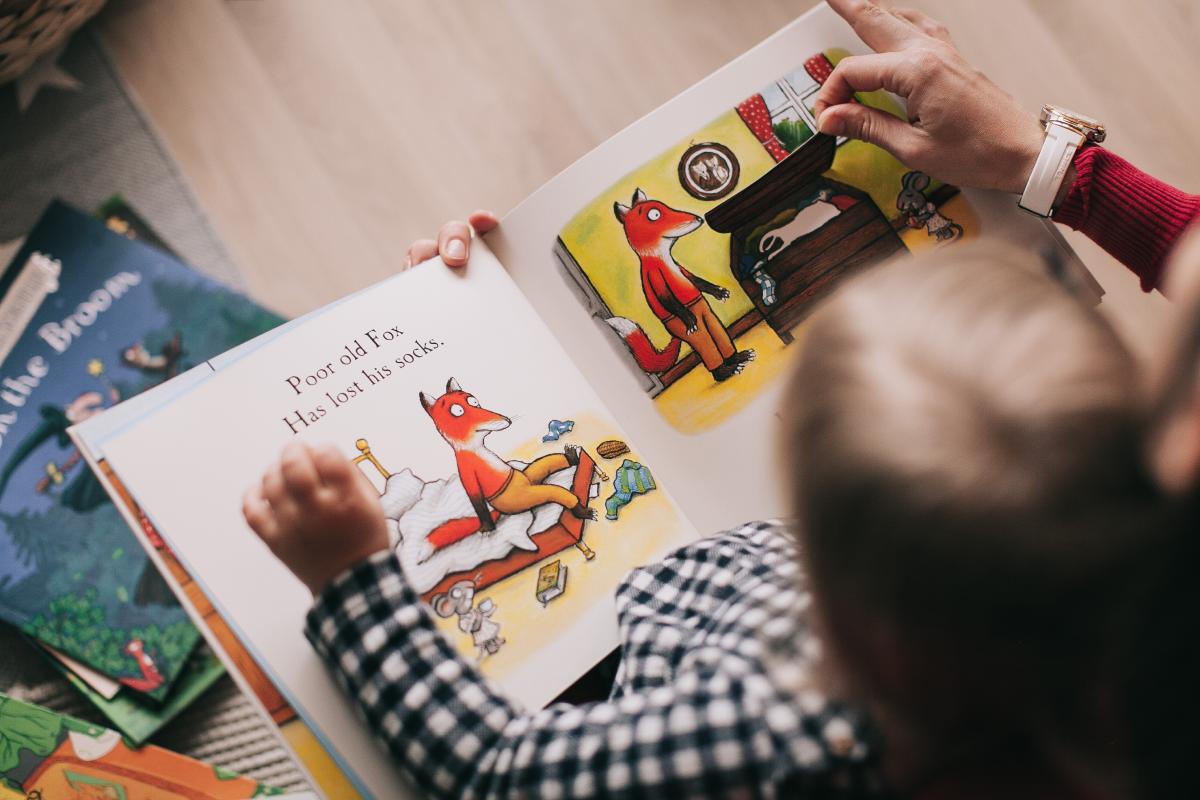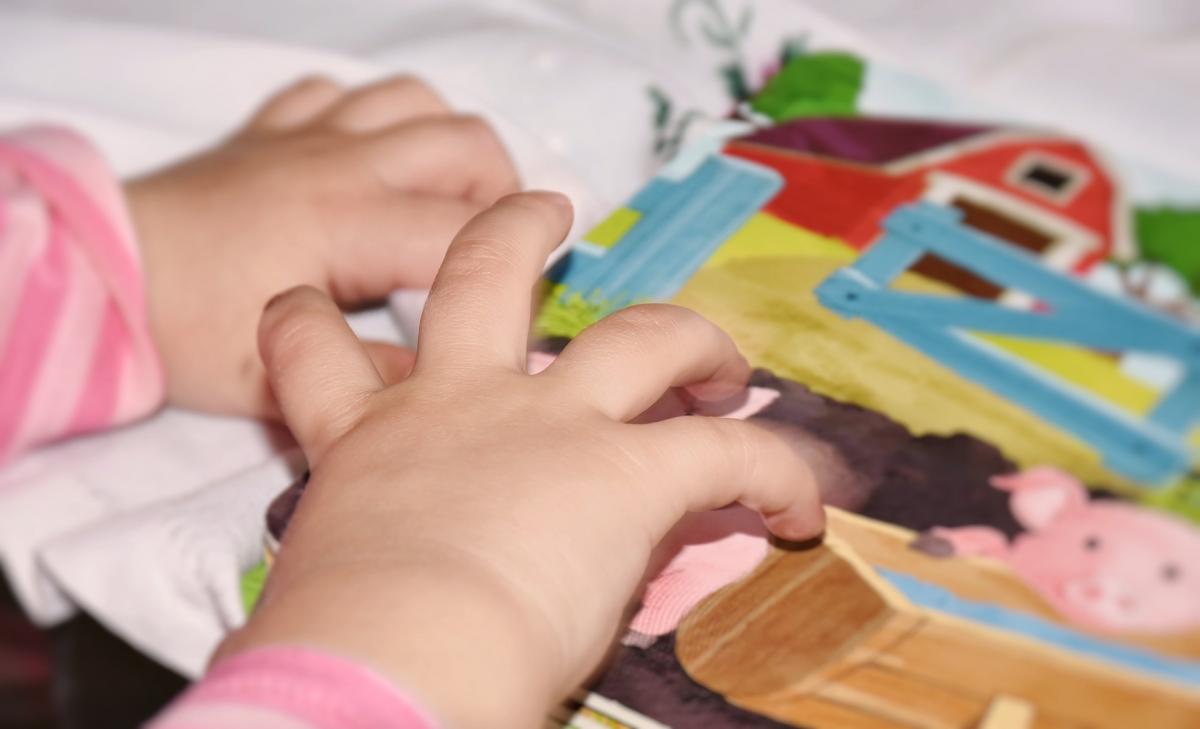Many of the most popular children’s books heavily feature non-human animal characters. Such stories and early-learning books are widely used to both entertain and educate, inevitably shaping how children grow up to perceive other animals.
Is it possible that some children’s books negatively influence the relationship between humans and other animal species? Do some books do better at subtly inspiring children to see all animals as deserving of life?

Photo by Lina Kivaka from Pexels
For hundreds of years, authors and illustrators have placed non-human animals at the centre of their children’s stories. Many of these creative depictions are aimed at providing some form of education, such as helping a toddler to learn the letters of the alphabet or develop an understanding of their senses. The first appearance of non-human animals in literature for children was as long ago as the seventeenth century, in a book aimed at helping children to read and count. Such books play an important role in shaping the way young children interact with the world around them, likely influencing a child’s developing understanding of their relation to other animals.
Some vegan picture books — take Stanley Foo’s Just Like Me! as an example — challenge dominant narratives with the intention of encouraging a compassionate, cruelty-free relationship between humans and all other animals. However, in many other books aimed at young children, an idealised picture of the lives lived by non-human animals is presented, one far removed from the realities of widespread suffering and exploitation; the lives of animals are, more often than not, presented as wholly idyllic.
When representations of non-human animals first appeared in children’s fiction, the primary aim was to teach children moral lessons, specifically how to behave towards other humans. Characters might have the appearance of non-human animals, but the behaviour they modelled was presented as being exclusively human. By encouraging children to feel sympathy for these ‘animal’ characters, it was hoped that they would express kindness towards their peers.
The tradition of anthropomorphising animals in the hope of educating children continues today. While many of the most popular characters in both books and films appear to be non-human animals, the stories told about them are really concerned with human social codes and behaviour. Ironically, research conducted by the University of Toronto’s Ontario Institute for Studies in Education found that such books often fail to inspire empathy towards other humans. A 2017 article from The Guardian explores the findings of this research: children are actually “more likely to share when read a book about sharing told with human characters.”
Significantly, it has been found that anthropomorphising animals in children’s books has the unintended consequence of encouraging children to develop a worldview in which humans are separate from, and hierarchically above, other animals. Research published in Frontiers of Psychology concludes that “when we ‘humanize’ non-human animals in our stories to young children, we do not promote learning about the biological world” and instead encourage children to consider humans as distinct from other animal species. This research also found that non-fiction books in which non-human animals are represented biologically (as opposed to fictionally) have the opposite effect of helping young children to see that human beings are just one animal species amongst many.

Image by RitaE from Pixabay
We are therefore left with the following conclusion: rather than fulfilling the aim of teaching children how to treat one another, anthropomorphising non-human animals has the unintended consequence of negatively impacting children’s perception of other animals. Reading and learning from books that depict non-human animal characters which aren’t really non-human at all encourages children to adopt an anthropocentric viewpoint from which they might one day justify exploitative behaviour. Furthermore, in failing to reflect the reality of life for non-human animals, many children’s books struggle to inspire in readers a desire to change the treatment of (farmed) animals.
What might be considered the direct opposite of informational, scientifically accurate books are baby ‘touch and feel’ books. These allow very young children to learn more about the world around them by touching synthetic ‘fur’ and rough ‘noses’. Through depicting certain animals as soft and cuddly, these baby books further the appeal of some non-human animals as loveable objects of affection. It’s no wonder that so many of us grow up to consider ourselves animal lovers. However, such books, though entertaining and enjoyable to read with young children, shut down conversations about human culpability in animal suffering before they even have a chance to begin.
This leaves us with the question of how we can best introduce to children the complex global relationship between human beings and other animal species. The popularity of non-vegan children’s books might explain the conflicting attitudes many people have towards other animals: a great many people assert that they are ‘animal lovers’ while continuing to view some animal species as food. As an article for OneGreenPlanet argues, “it’s not enough to simply like animals, to find them cute and fluffy.” If what we learn in our formative years plays a significant role in who we grow up to become, subtly introducing children to such topics at an early age helps us to move towards a future in which widespread animal suffering no longer exists.
As mentioned above, books such as Stanley Foo’s Just Like Me! explicitly emphasise the fact that non-human animals are friends and not food, helping young children to see the similarities between ourselves and other animals. It also worth noting that books often targeted at older children, such as Charlotte’s Webb by E. B. White and Anna Sewell’s Black Beauty, can have a significant, long-term impact on readers, inspiring an empathy that might do important work in developing compassionate relationships between readers and all other animals.
By Freya Partridge
References
Farr, Sara. “10 Amazing Children’s Books That Will Inspire Your Little One to Stand Up for Animals.” OneGreenPlanet. 2015. https://www.onegreenplanet.org/animalsandnature/childrens-books-that-will-inspire-your-little-one-to-stand-up-.... Accessed May 2019.
Flood, Alison. “Children's books with humans have greater moral impact than animals, study finds.” The Guardian. Sep. 2017. https://www.theguardian.com/books/2017/sep/01/only-childrens-books-with-humans-have-moral-impact-study-finds. Accessed May 2019.
Shaw, Matthew. “Children's animal tales.” British Library. 10 Nov. 2015. https://www.bl.uk/animal-tales/articles/childrens-animal-tales. Accessed May 2019.
Waxman, Sandra R. et al. “Humans (really) are animals: picture-book reading influences 5-year-old urban children's construal of the relation between humans and non-human animals.” Frontiers in Psychology. 5: 172. 17 March 2014.
The views expressed by our bloggers are not necessarily the views of The Vegan Society.

